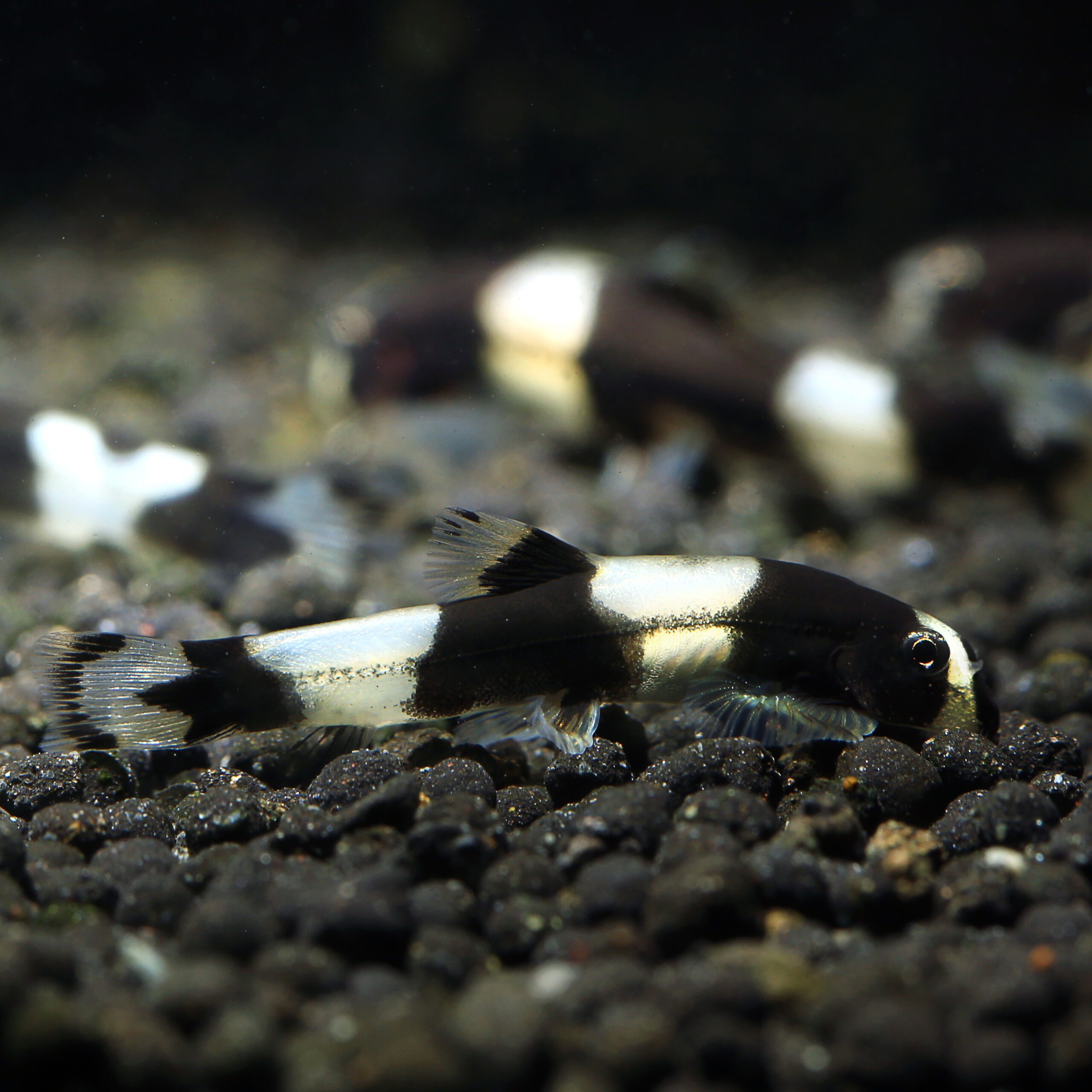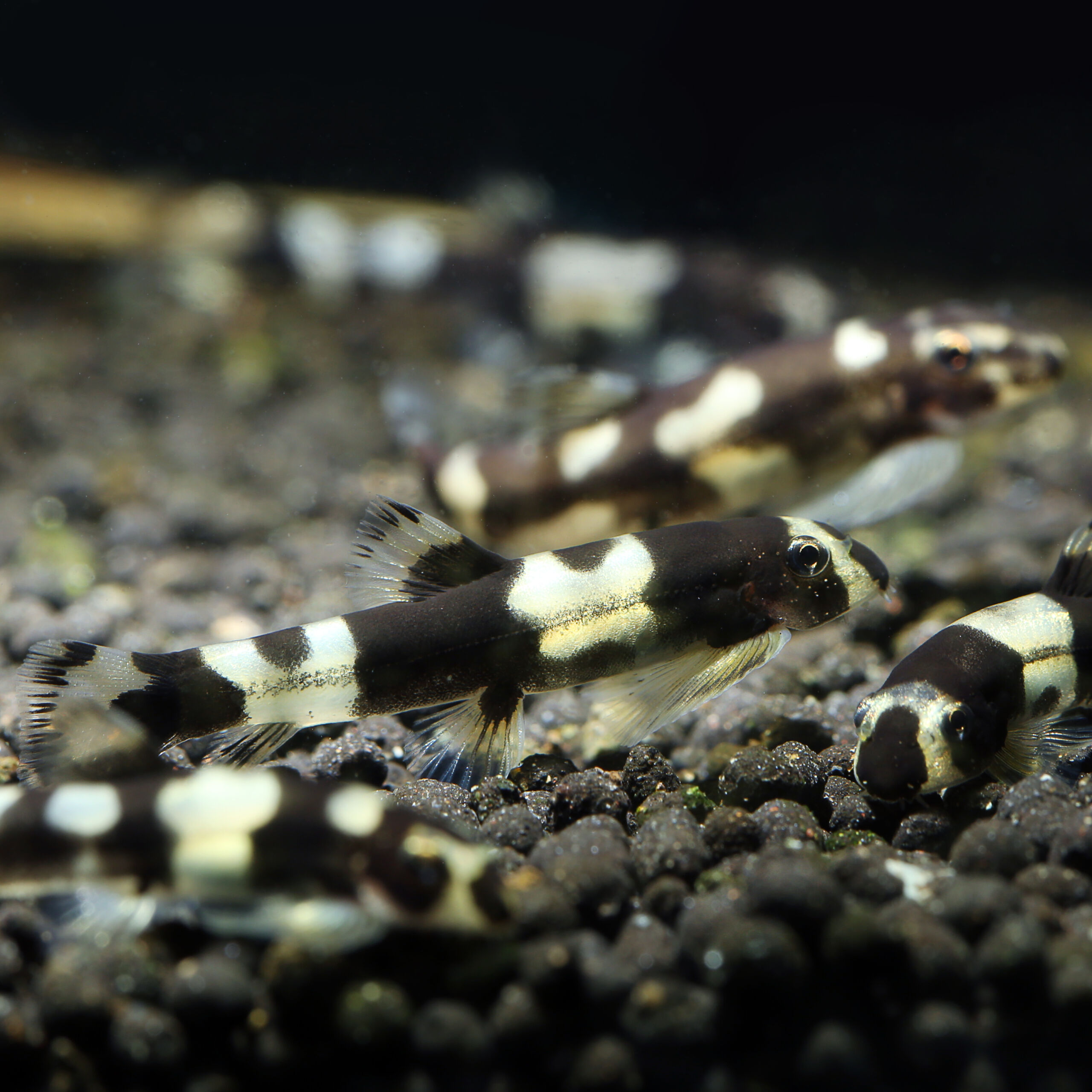Panda Loach
Yaoshania pachychilus
The Panda Loach is not only an absolute rarity, but also a beautiful species of loach that tolerates shrimp.
- rarely available loach species
- contrasting coloring
- eats algae
1 in stock
 Delivery in a few working days
Delivery in a few working days
 Free shipping from €60 across Austria
Free shipping from €60 across Austria





Important data
Product description & details
The Panda Loach was described by CHEN in 1980 as Protomyzon pachychilus. The animals have youthful markings reminiscent of a small bamboo shark. Over time, the drawing changes to a gray stripe drawing. The occurrence appears to be limited to a few spots near the confluence of some rivers in the Dayao Mountain (Dayaoshan) region of Jinxiu County, Guangxi Zhuang Autonomous Region, southern China. The animals live there when the current is good and the water level is about 50 cm high, on a sandy subsoil with smooth stones. They occur in small groups and graze the biofilm with its microorganisms. The water temperature in nature ranges from 15 ° C to 24 ° C.
Care in the aquarium
With a size of up to 6 cm, the Panda Loach can be accommodated in an aquarium from 60 cm if it is tailored to its needs. It is imperative that there is a good current and that the water is oxygen-rich. The water temperature should not exceed 24°C and should also vary from 15°C – 22°C over the course of the year. The animals feel most comfortable in groups, which is why at least 7-10 conspecifics should be kept together. Make sure the water is of good quality: this is best achieved with a sufficiently large filter and a regular, weekly water change of around 30%. The pH can vary between 6.5 and 7.5 and the hardness can go up to 15 ° GH for keeping.
Feeding
Since the Panda Loach is a limnivore, a large part of its food consists of algae and biofilm, which must always be taken into account when keeping it. Feed that is too high in protein is not well tolerated. Green fodder is readily accepted.
Sexual characteristics and breeding
In this species, the sexes are hardly or not at all distinguishable, especially in immature animals. Adult females are slightly larger and more heavily built than males. Please note that the colors of the Panda Loach become somewhat blurred in adulthood and are no longer drawn so clearly in black and white.
Breeding these loaches is not easy. In a breeding attempt, cool rain should be simulated with soft water in order to increase the willingness to spawn. The females lay their eggs on or in the bottom of the aquarium, where the hatched larvae remain for a while until they have enough strength to swim freely.






